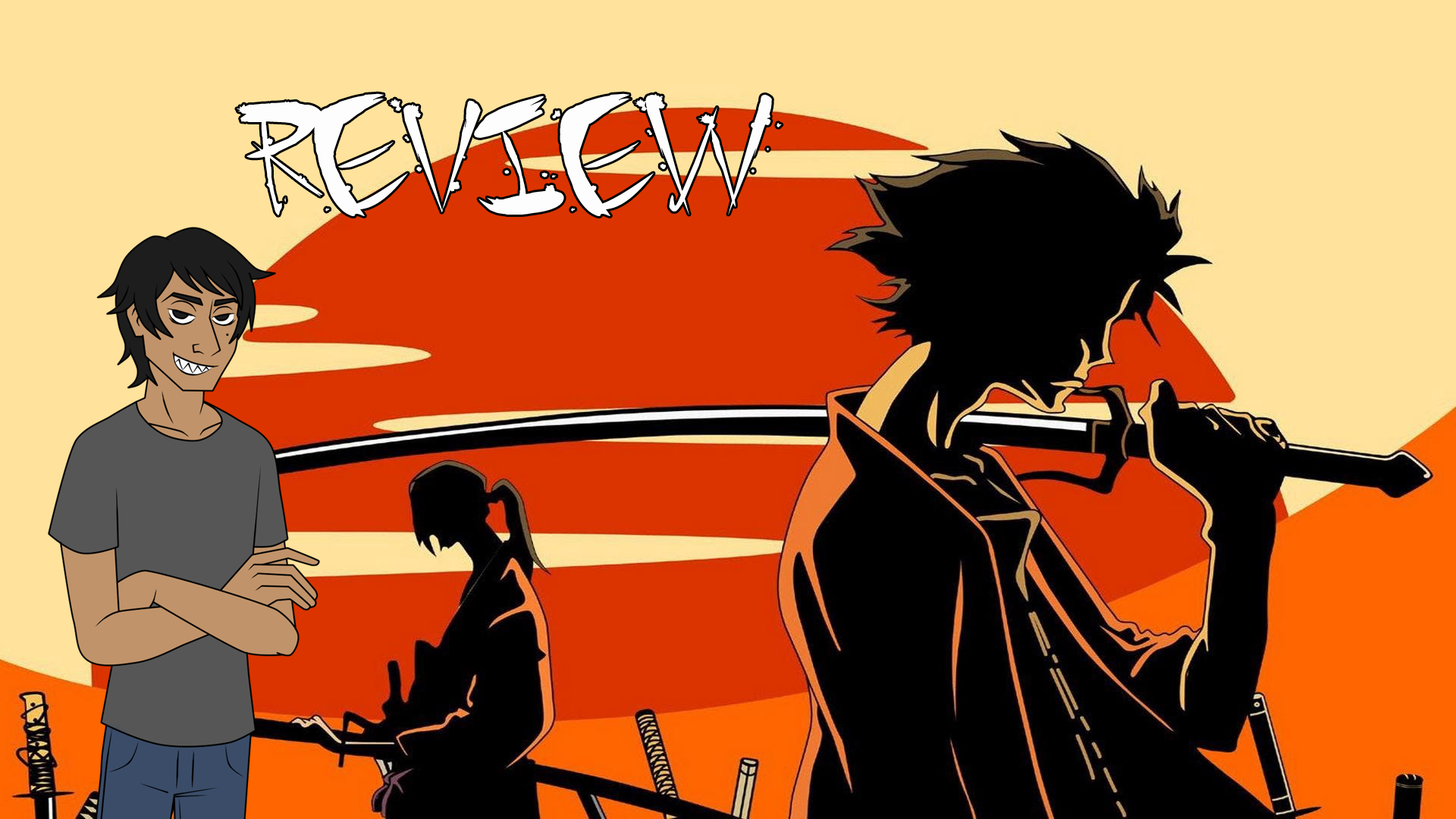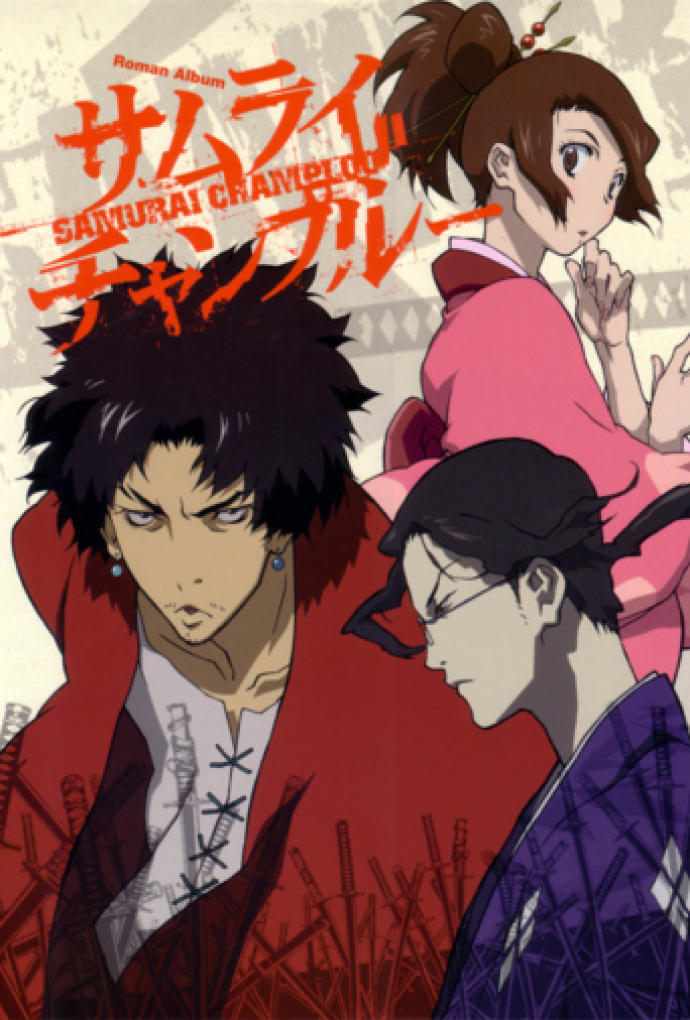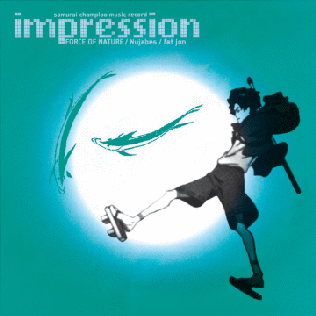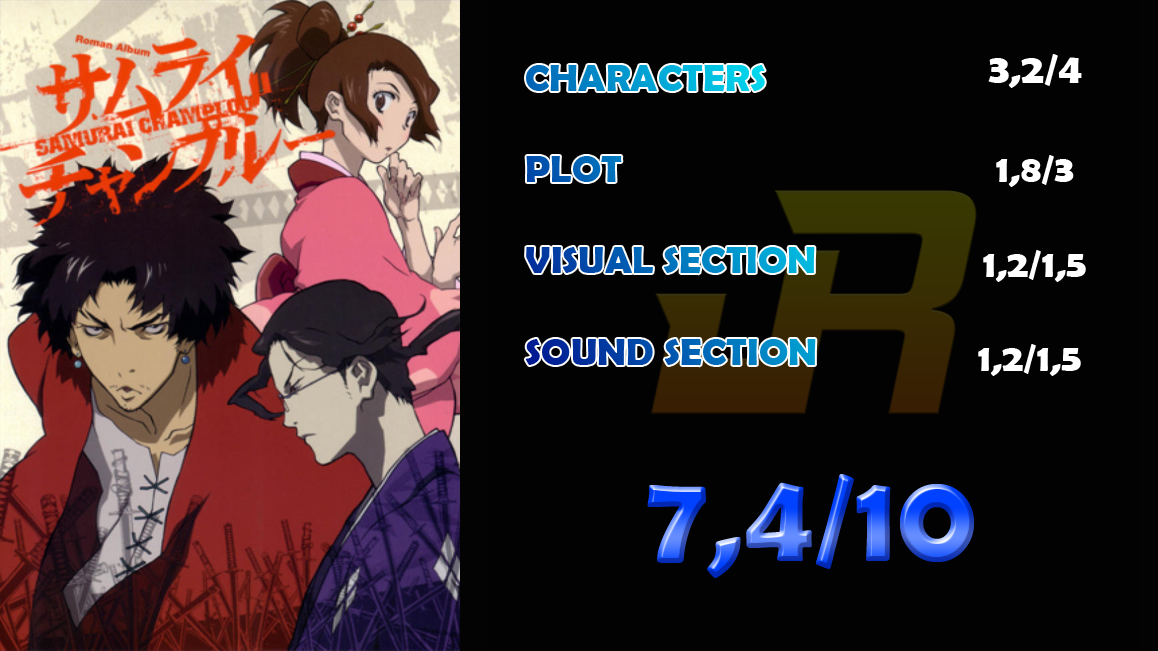Buenas a todos en la comunidad, hoy les traigo una reseña de uno de los primeros seinen que vi, dirigida por el gran Shinichiro Watanabe.
Hello everyone in the community, today I bring you a review of one of the first seinen I saw, directed by the great Shinichiro Watanabe.
Review - Samurai Champloo
Historia / Plot
La historia se ambienta en el Japón del período Edo. Fuu era una joven que trabajaba en una casa de té hasta que esta fue destruida después de una violenta pelea a tres bandas entre Mugen el vagabundo, Jin el samurái errante, y los guardaespaldas del hijo del Daikan de ese pueblo. Al final del combate, Mugen y Jin son arrestados para ser ejecutados al día siguiente. Fuu les ayuda a escapar a cambio de que la ayuden a encontrar al "samurái que huele a girasoles". A pesar de acceder al trato, Mugen y Jin están siempre intentando acabar el uno con el otro.
The story is set in Edo-period Japan. Fuu was a young girl working in a teahouse until it was destroyed after a violent three-way fight between Mugen the wanderer, Jin the wandering samurai, and the bodyguards of the son of the town's Daikan. At the end of the fight, Mugen and Jin are arrested for execution the next day. Fuu helps them escape in exchange for their help in finding the "samurai who smells like sunflowers". Despite agreeing to the deal, Mugen and Jin are always trying to finish each other off.
La historia narra sus viajes, y cómo arreglan los líos en los que se meten tanto con criminales como con la ley por la naturaleza tan conflictiva de la época en que los problemas se solucionaban a espadazos, dichos líos que abarcan de 1 a 3 capítulos ya que esta serie posee un formato episódico, por lo que habrán arcos muy buenos y otros que no son malos pero que tampoco es que aporten al desarrollo de la trama o explorar temas interesantes con los personajes, pero suelen ser los mas enfocados en la comedia. Hay veces en que sus aventuras de alguna forma se relacionan con hechos importantes en la historia de Japón, y es que se podría considerar un Japón alternativo ya que en este hay presencia de la cultura Hip Hop como el rap, pinturas que parecen grafitis, breakdance como un estilo de pelea, todo eso ¡en pleno período Edo!, este tipo de combinaciones raras típicas del director Shinichiro Watanabe como aquella combinación de temática futurista con el jazz en Cowboy Bebop. Esto podría sacar a muchos de la inmersión pero la verdad es que uno se acostumbra.
The story narrates their travels, and how they fix the trouble they get into with both criminals and the law because of the conflictive nature of the time when problems were solved with swords, these messes span from 1 to 3 chapters as this series has an episodic format, so there will be very good arcs and others that are not bad but that do not contribute to the development of the plot or explore interesting topics with the characters, but are usually the most focused on comedy. There are times when their adventures are somehow related to important events in the history of Japan, and it could be considered an alternative Japan because in this there is a presence of Hip Hop culture such as rap, paintings that look like graffiti, breakdancing as a fighting style, all this in the middle of the Edo period, this kind of weird combinations typical of director Shinichiro Watanabe as that combination of futuristic theme with jazz in Cowboy Bebop. This might take many out of the immersion but the truth is that you get used to it.




